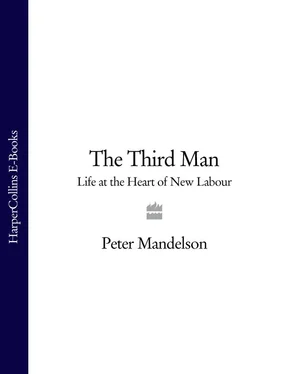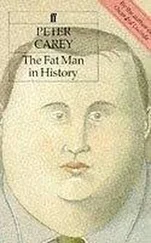Big Wood seemed much bigger to me as a child than it does now. It began at the top of our road, three minutes’ walk from our door. At the other end was an even larger expanse of green, the extension to Hampstead Heath, which bordered the neighbourhood where I spent the first two decades of my life. Hampstead Garden Suburb was the creation of Dame Henrietta Barnett, a Christian social reformer who believed that mixed communities with the feel of a country village would soften and ultimately heal the hostility of urban life. At the turn of the last century, after many years of charity work in the East End of London, she enlisted the architect Sir Edwin Lutyens and the utopian town planner Raymond Unwin to make her vision a reality.
The Suburb was less posh and intellectually self-important than Hampstead proper, which lay just over a steep incline and a mile or two nearer the centre of London. Under the Suburb’s original planning rules, there were no fences or walls between properties, only hedgerows. No shops were permitted within its boundaries. And no pubs. While the social activist in Dame Henrietta must have understood the attraction of a comradely pint at the end of a working day, the Christian in her could not abide the idea. The roads were wide, and trees were everywhere, bursting with white and pink and purple in springtime. It was a place designed for walking, and letting one’s eyes tilt skywards. The Suburb was centred on a lovely church square – St Jude’s C of E on one side, the Methodists opposite – and the adjacent girls’ school Dame Henrietta created, and which bears her name. For families, the Suburb was ideal. As a child, I loved it – an ardour that briefly dimmed when, as a teenager, I found it a bit too quiet and confining, but which I have since rediscovered. It was in London, yet not quite of it.
It was, however, very much a part of Labour London. Hampstead was home to Hugh Gaitskell and Michael Foot, but we had our share of luminaries too, notably Harold and Mary Wilson. They were near neighbours, just around the corner, and good friends. Their boys, Robin and Giles, were a little older than me and my elder brother Miles – Mary very kindly passed Giles’s rather scratchy Cub Scout jersey on to me when it was time for me to join the local pack attached to the Methodist church. My most vivid early political memory is from a few days before my eleventh birthday, when I watched the Wilsons negotiate a gaggle of camera crews and reporters, including the famous American broadcaster Walter Cronkite, as they left for Downing Street after the 1964 election.
A year later, the Wilsons invited us to Number 10 to watch Trooping the Colour. It would be ridiculous to suggest that as I walked wide-eyed through the famous black door I imagined I would return forty-five years later to watch the same ceremony as a senior minister, alongside another Labour Prime Minister. But I can’t deny that I was dazzled. Marcia Williams, Harold’s trusted political secretary, fed me large quantities of triangular smoked-salmon sandwiches and asparagus rolls. She even took my hand and led me into the Cabinet Room, and briefly planted me in the Prime Minister’s chair. I was conscious of feeling somehow special. Conscious, too, that part of that feeling had to do with the fact that my bond with Labour really began with my family. My mother was the only child of Herbert Morrison, the founding General Secretary of the Labour Party in London, a minister in Ramsay MacDonald’s 1929 government, and the first Labour leader of the London County Council in the 1930s. He served as Home Secretary in Churchill’s wartime cabinet, and was the organising force behind the manifesto and the election campaign that delivered Labour’s startling 1945 landslide, becoming Deputy Prime Minister and later Foreign Secretary in the Attlee government. As we left the Cabinet Room, Marcia introduced me to another guest sitting in the hallway, Clement Attlee himself. ‘This is Herbert’s grandson, Clem,’ she said. The former Prime Minister, either through advanced age or because he and my grandfather had not exactly been bosom buddies, looked at me briefly before grunting something inaudible.
My mother cared passionately about the issues that drove politics: I remember joining her on a march against Enoch Powell’s ‘rivers of blood’ speech when I was fourteen. But her experience of the way politics had come to dominate her father’s life, often crowding out both her and her mother, left her with a lifelong dislike of the exposure that goes with public life. As a young girl, she told her father to keep her out of his ‘beastly politics’. My father’s connection with Labour was less genetic than my mother’s, but in many ways stronger. Unlike her, he was fascinated by politicians, and by the bustle of energy and argument that surrounded them. By the people who surrounded them, too. He was good friends with Marcia Williams, and became especially close to the quiet, stoical Mary Wilson, as she and I have always recalled whenever our paths have crossed since.
His own starting point was traditional, Old Labour politics. Maybe this was because his views were formed in the post-war years, when the division between Labour and the Tories was starker and simpler than it has since become. Maybe part of it came from his own DNA. He was born in Pinner, an outer London suburb not exactly famous for politics, or much of anything else. But his ancestral roots went back to the nineteenth-century Jewish community in Poland, then under Russian rule. His great-grandfather Nathan was said to have been involved in an anti-tsarist plot, and to have escaped retribution only by fleeing one step ahead of the secret police.
There is a temptation to suggest that my father inherited Nathan’s streak of rebelliousness and Jewish activism. Somehow, though, I suspect not. He never hid his Jewishness – indeed, he could hardly have done so. He spent nearly all of his working life as the legendarily smooth, gregarious and popular advertising manager of London’s Jewish Chronicle , the world’s oldest Jewish newspaper. Yet he remained a strident non-believer. I cannot recall his ever walking the short distance to Hampstead Garden Suburb synagogue, even on the Jewish New Year or at Yom Kippur; he certainly never took me there. Religion never figured in our lively dinner table discussions, although politics invariably did.
I suppose I was, however, dimly aware of my refracted Jewishness. Most Fridays I would have dinner with my friend Caroline Wetzler and her family, observing a form of Jewish family routine. Another of my closest childhood friends was Keren Abse, daughter of the poet and playwright Dannie Abse and niece of the outspoken Jewish Labour MP Leo Abse. I would occasionally go with my father to the offices of the Jewish Chronicle in Furnival Street, just off Holborn. His army of advertising salesmen and administrators were unfailingly deferential to him, and unfailingly kind to me. But my main Jewish Chronicle memory was when the man in charge of ad layout, Nat Goldstein, took Miles and me to the Hammersmith Odeon one evening shortly after my twelfth birthday, for a Beatles concert. I did not enter a synagogue until more than three decades later, for the wedding of my wonderfully loyal long-time executive assistant, Maree Glass. The ceremony was extraordinarily beautiful. I also found it oddly, and a bit regretfully, alien.
My mother and Miles, but especially my father and I, followed Labour’s internal debates and its battles with the Tories the way football fanatics would fixate on Cup runs or local derbies. Labour was not just our ‘team’, however. That does not capture the depth of the attachment: among our happy quartet of atheists at 12 Bigwood Road, Labour was more nearly a religion.
Читать дальше












